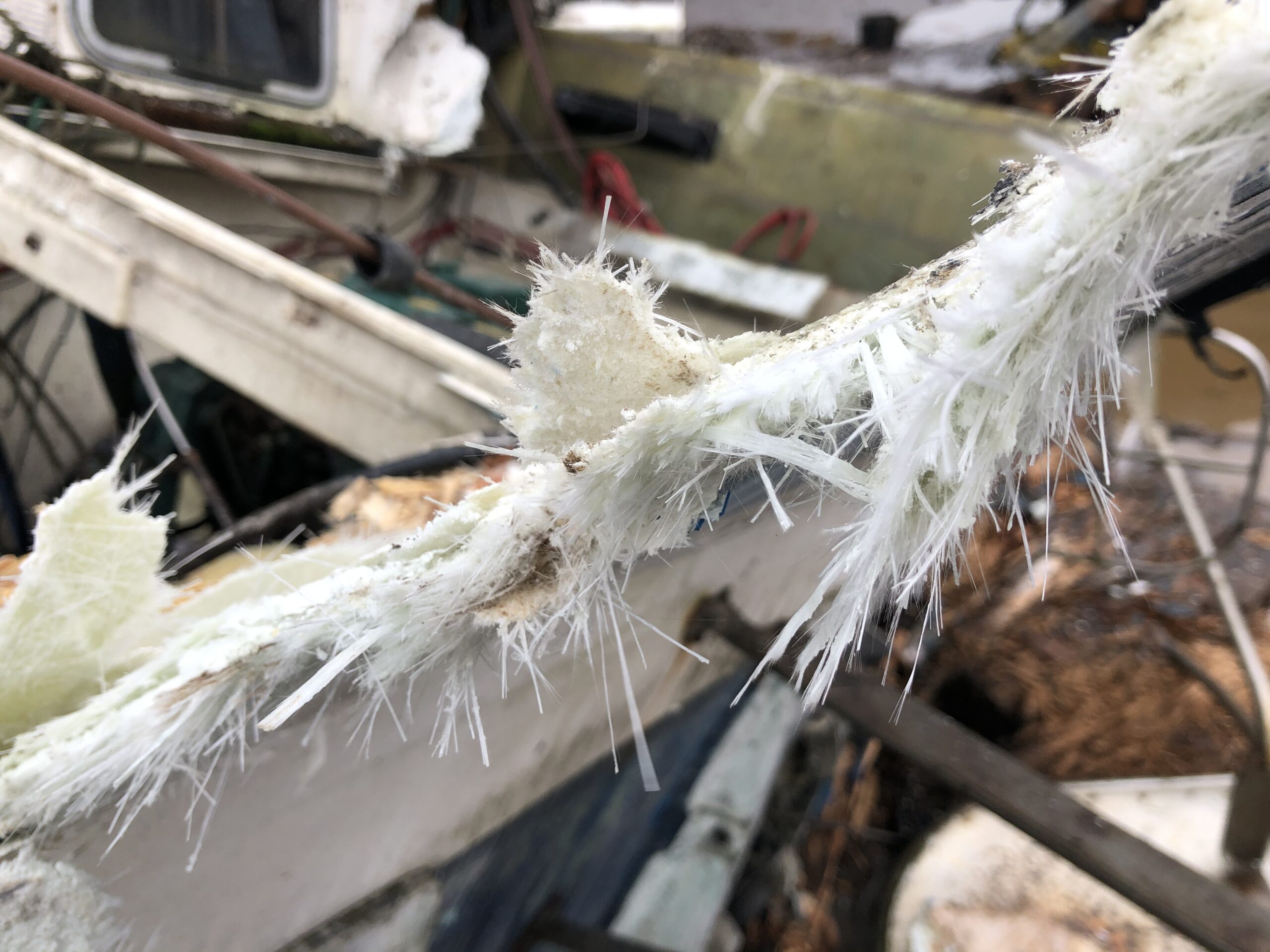How Can Fibreglass be Recycled?

Recycling fibreglass (Glass Reinforced Plastic or GRP) is more complex than recycling simple plastics or metals due to its composite nature – it’s a blend of glass fibres and a polymer resin, which are chemically bonded. Separating these components efficiently while maintaining the quality of the recovered materials is a significant challenge.
However, several methods are employed or under development:
1. Grinding/Mechanical Recycling
- This is the most common method. Fibreglass waste is shredded and then ground into a fine powder or small pieces.
- The resulting material can be used as a filler in various products like cement, asphalt, artificial wood, or even in new composite materials as a low-grade filler.
Challenge: The grinding process often damages the glass fibres, reducing their length and strength, so they can’t be reused for high-strength applications like new fibreglass products.
2. Incineration (Waste-to-Energy):
- Fibreglass waste is burned to generate heat, which can be used to produce electricity or heat kilns (e.g., in cement manufacturing).
- The organic resin component of the fibreglass acts as a fuel.
Challenge: While it recovers energy, the heat significantly damages the glass fibres, making them unusable for material recovery. The process also produces ash, which often still needs to be landfilled. Composites UK notes that incineration isn’t recognised as a recycling option for fibreglass in the UK or EU.
3. Pyrolysis:
- This is a thermal decomposition process where fibreglass is heated to high temperatures (around 500°C) in an oxygen-depleted environment.
This breaks down the organic resin into recoverable substances: pyro-gas (which can be used as fuel) and pyro-oil (similar to crude oil).
The solid byproduct, which includes the glass fibres, remains
Advantage: This method has the potential to recover the glass fibres with less degradation than simple grinding, making them more suitable for reuse in some composite applications. The pyro-gas can even power the pyrolysis process, making it self-sustaining.
Challenge: It can be a costly operation and requires specialised equipment.
4. Chemical Recycling (Solvolysis):
- This method uses solvents to dissolve the polymer resin, separating the glass fibres.
Advantage: It aims to recover high-quality glass fibres that can potentially be reused in new fibreglass products.
Challenge: It’s often energy-intensive, can involve hazardous chemicals, and is largely still in the research and development phase for commercial scalability.
The key challenge across all methods is the difficulty in economically separating the glass fibres from the resin matrix without significant degradation of the fibres, to allow for “closed-loop” recycling where the material can be used for the same application again. For now, most recycled fibreglass ends up as a lower-value filler or fuel.
Date Published: June 1, 2025
Last Modified: July 2, 2025
Related Articles
- Published On: October 1st, 2019
Last week the Boatbreakers team hosted representatives of a number of governing bodies in the marine industry.
- Published On: July 26th, 2017
Abandoned boats are a growing global problem. Boatbreakers focus our efforts on the UK and Europe but across the Atlantic there is a similar problem occurring. At Boatbreakers we often get enquiries from American boat owners who are looking to dispose of their end of life vessel in a responsible manner.
- Published On: November 19th, 2018
Our team found this video of abandoned boats in a Bermudan Boat Graveyard on Youtube. Whilst the video is a fairly short one it shows a worrying image of how many boat yards will end up looking if boats are left abandoned by their owners.
- Published On: November 19th, 2018
American Problem With Abandoned Boats, By Travis Fain, WRAL statehouse reporter.




